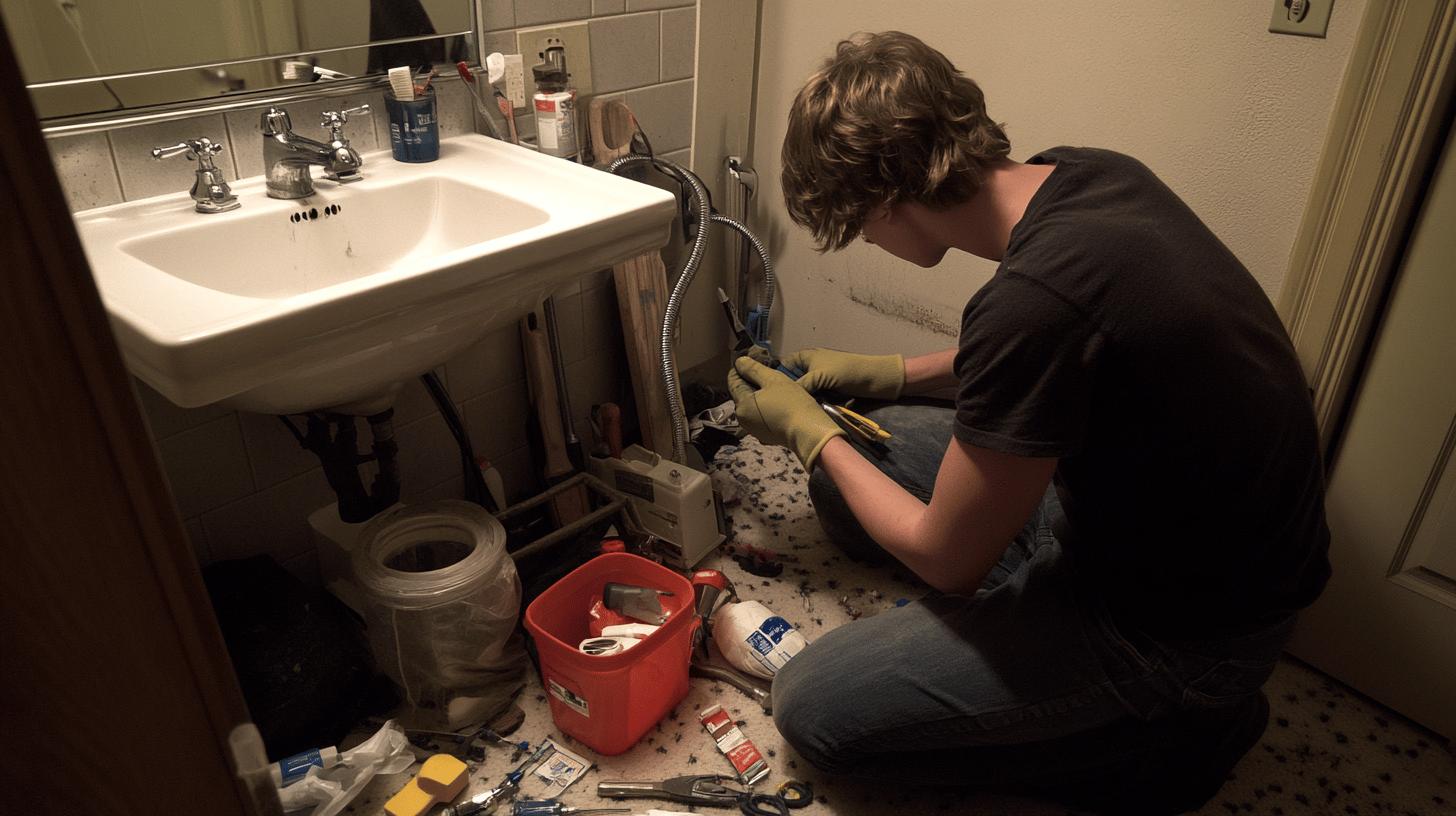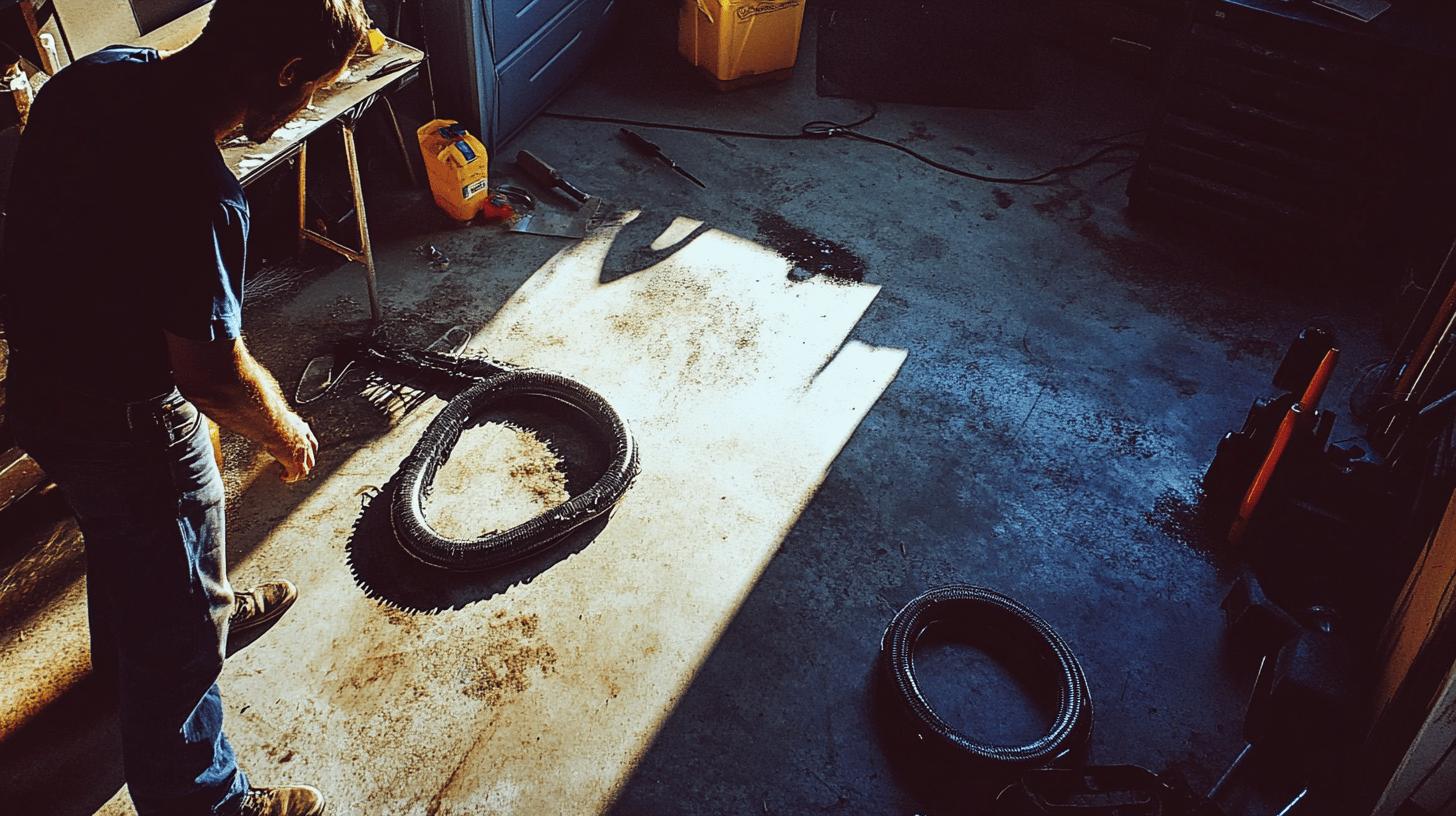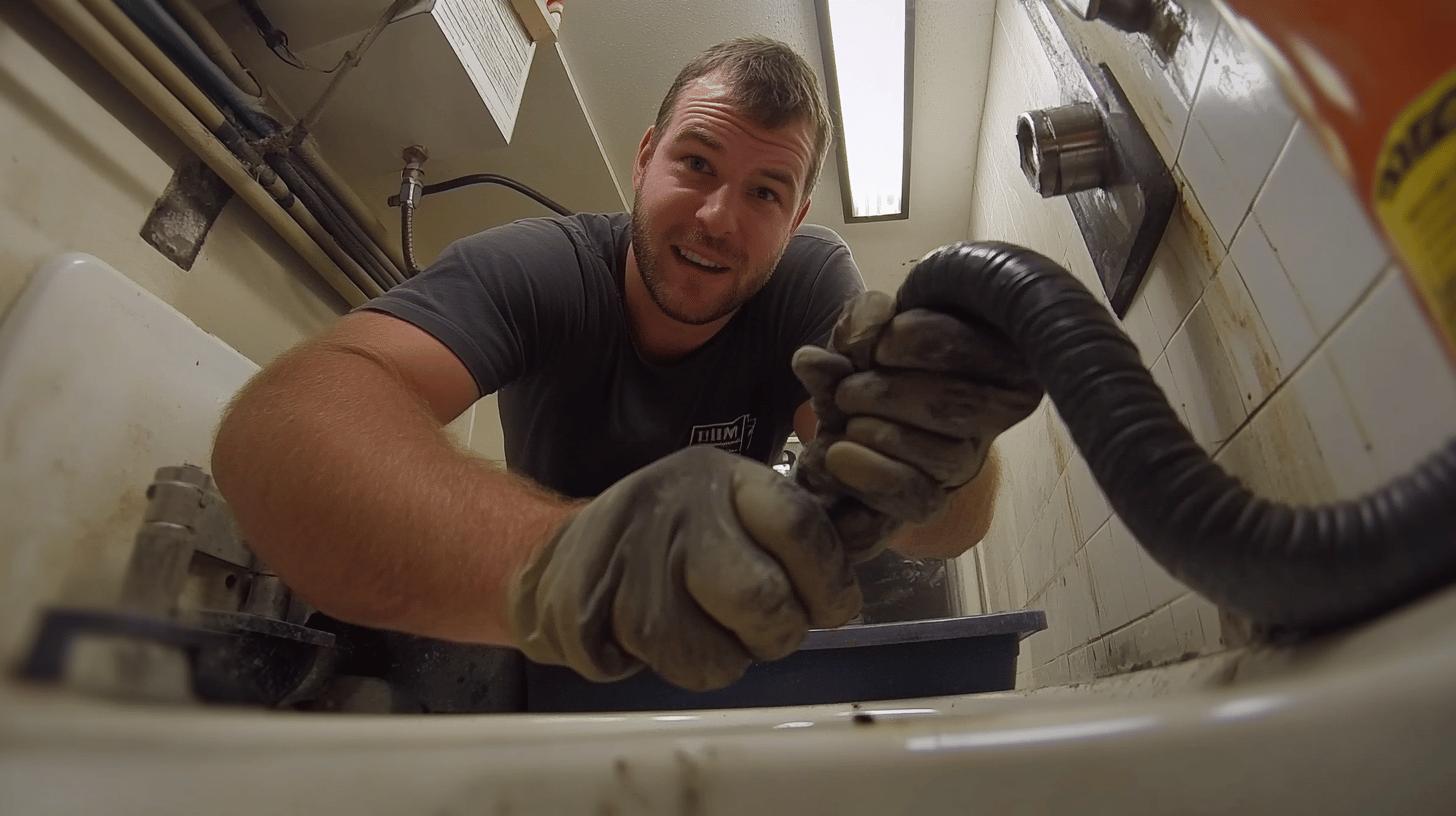TL;DR:
- Plumbing Snake: Flexible tool for clearing drain clogs.
- Types:
- Hand Auger: For small sink clogs.
- Toilet Auger: Specific for toilets.
- Drum Auger: Best for bathtubs and showers.
- Power Snake: Heavy-duty for tough clogs.
- Flat Sewer Rod: For serious sewer line issues.
- Using a Snake:
- Gather tools/safety gear.
- Remove P-trap.
- Insert snake slowly.
- Rotate handle to break clogs.
- Feed until resistance lessens; repeat if needed.
- Maintenance: Clean after use, avoid rust.
- Professional Help: Needed for persistent clogs, slow drainage, unusual noises, or visible damage.
Sick of dealing with stubborn drain clogs that just won’t budge? It might be time to try a plumbing snake – a super useful tool that can clear most clogs with ease. In this guide, you’ll learn how to use a plumbing snake the right way, and what sizes and types work best for different situations. Whether it’s a simple sink clog or a tough blockage, knowing the right technique will save you time and hassle. Ready to learn how to use a plumbing snake? Let’s get into it!
Understanding Plumbing Snakes and Their Uses
A plumbing snake is a flexible tool used to clear clogs in your home’s drains. The coiled cable easily moves through pipes to break up blockages. Whether it’s a small sink clog or a bigger plumbing issue, it can get the job done. You simply insert the cable into the drain, and it reaches the clog, breaking it apart so the water can flow again. It’s a great tool for tackling all kinds of plumbing problems.
Types of Plumbing Snakes
- Hand Auger: Great for small clogs in sinks. It’s simple and works well for minor blockages.
- Toilet Auger: Built specifically for toilets, clearing clogs without damaging porcelain or internal plumbing.
- Drum Auger: Best for bathtubs and showers, handling moderate clogs with its flexible design.
- Power Snake: Heavy-duty option for tough, larger clogs, offering the strength needed for stubborn issues.
- Flat Sewer Rod: Perfect for serious sewer line clogs needing more reach and strength.
Picking the right plumbing snake is key to clearing drains effectively. Different snakes are made for specific jobs, and using the wrong one could damage your pipes. Knowing which snake to use helps you tackle plumbing problems with confidence. If you’re not sure, professional plumbers can always help with the right solution.
Step-by-Step Guide to Using a Plumbing Snake

Prepare before snaking a drain. Gather tools and wear protective gear—gloves and goggles—to keep safe from debris and splashes.
How do you effectively unclog a sink with a snake?
- Gather necessary tools and safety gear: Have a reliable snake, gloves, and goggles ready. This prevents injuries and ensures smooth operation.
- Remove the P-trap to access the drain: Disconnect the P-trap, the U-shaped part that often has clogs. This step lets the snake enter the drain without obstructions.
- Insert the snake into the drain slowly: Gently feed the snake in. This careful handling avoids pipe damage and helps the snake reach the blockage.
- Rotate the handle to break up the clog: When you feel resistance, turn the handle clockwise. This motion helps the snake latch onto or break apart the clog.
- Feed the snake until resistance lessens: Push forward until you feel less resistance, showing the clog is breaking up or being pulled back.
- Repeat the process if needed: If still clogged, retract and push again. Multiple tries may be needed for stubborn blockages.
- Clean and store the snake properly: After use, clean the snake with hot water and disinfectant. Dry it before storing to prevent rust.
What should you do if the snake won’t turn corners?
If the snake gets stuck on corners, try retracting it a little and rotating while pushing. This can help it get past bends without putting too much pressure on the pipes and risking damage.
Common Mistakes and Safety Tips for Using Plumbing Snakes
Common mistakes with a plumbing snake include using too much force, which can damage the pipes, and not cleaning the snake after use, leading to rust and reduced performance. Taking care of your snake by cleaning it properly helps it last longer and work better.
To ensure safe use, follow these tips:
- Wear gloves and goggles
- Avoid excessive force
- Ensure the snake is uncoiled
- Clean after each use
- Store in a dry place
These guidelines ensure effective snake use, minimizing risk and maintaining functionality.
Maintenance and Troubleshooting for Plumbing Snakes

To keep your plumbing snake in good shape, clean it with hot water after each use to remove debris. This helps prevent rust, which can make the snake weaker over time. Make sure to dry it completely before storing it in a dry place.
Troubleshooting a Stuck Snake
Getting a snake unstuck can be frustrating. Use these techniques:
- Check for kinks
- Ensure it’s not coiled in the pipe
- Gently retract and reinsert
- Rotate the handle to ease through the blockage
These steps keep operations smooth and prevent damage.
Regular maintenance prevents issues. Avoid excessive force to protect the snake and pipes. Inspections help identify issues for timely fixes, ensuring your snake remains reliable.
When to Call a Professional Plumber
DIY snaking can fix most clogs, but some situations require a professional plumber. They can handle tough blockages and provide better solutions for your drains. For complex plumbing systems, pros have the right tools and skills to get everything flowing smoothly again.
Signs that you should call a plumber include:
- Persistent clogs despite attempts
- Slow drainage in multiple fixtures
- Unusual pipe noises
- Signs of damage or leaks
Recognizing these early can save time and prevent damage, ensuring smooth operations.
Final Words
By exploring the best plumbing snake tips, you’ve gained useful insights for handling various plumbing challenges. You’ve learned about the different types of snakes and when to use each one, ensuring the right tool for the job. With step-by-step guidance, you can tackle clogs more efficiently, and understanding common mistakes will help you avoid damaging your pipes. Regular maintenance tips will also extend your snake’s lifespan, making future projects easier. While DIY can solve many issues, knowing when to call a pro ensures complex problems are addressed properly. Use these strategies to keep your drainage system running smoothly.
FAQ
How to use a plumbing snake properly?
A plumbing snake, or auger, is used by inserting the snake into the drain and rotating the handle. Gradually feed the snake into the drain until you feel the clog break up or the resistance lessens.
Should you run water while snaking?
Running water while using a plumbing snake can help wash away loosened debris. However, use caution to avoid overflow if the clog is severe.
How to make a drain snake more effective?
To enhance effectiveness, ensure the snake is fully extended and gradually rotate it. Repeat the process if necessary, and clean the snake after use to prevent rust and maintain efficiency.
Why won’t my drain snake go any further?
If the snake stops moving, it could be encountering a tough blockage or a pipe bend. Try retracting slightly, then proceed gently. If it persists, consider calling a professional plumber.
Plumbing snake tips DIY and best practices?
Start by choosing the correct type of snake for the task. Use safety gear like gloves and goggles, and avoid excessive force to prevent pipe damage. Clean and store the snake after each use.
How to use a drain snake on a toilet?
To snake a toilet, use a toilet auger specifically designed for this purpose. Insert the auger gently into the bowl, pushing and rotating the handle until you reach and clear the clog.
How to make a plumbing snake turn corners?
A flexible snake with a rotating handle might help navigate corners. Gently maneuver the snake, using slow and steady movements to work around bends in the pipe.
How to snake a drain from outside?
Insert the snake into the outdoor cleanout or access point. Slowly feed it through, turning the handle gently to break any clogs and retract if you encounter resistance.
How to use a drain snake on a kitchen sink?
Remove the sink’s P-trap for easier access, insert the snake, and rotate it to clear any blockages. Ensure the snake is uncoiled and feed it until the blockage is gone.
How to use a drain snake on a bathtub?
Remove the overflow plate or stopper, insert the snake, and rotate the handle to tackle the clog. Feed the snake further until resistance decreases, then clean and store the tool after use.

